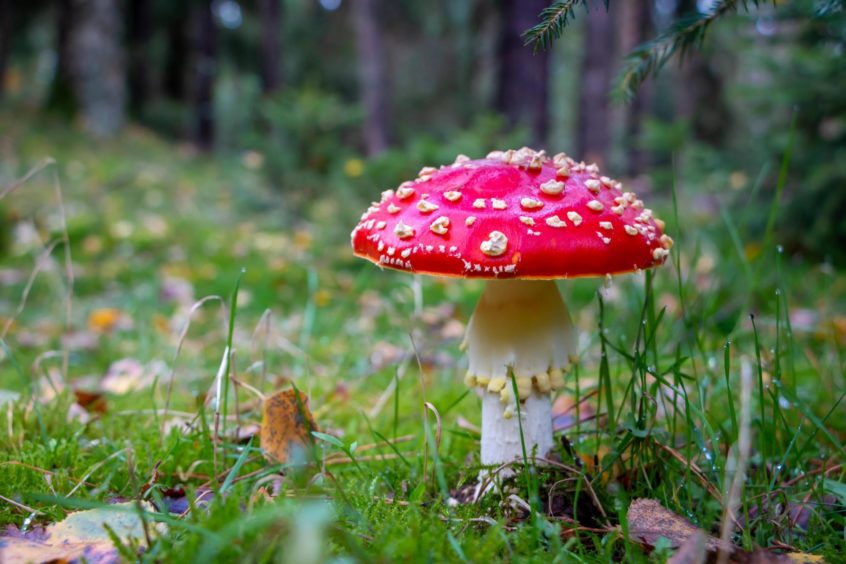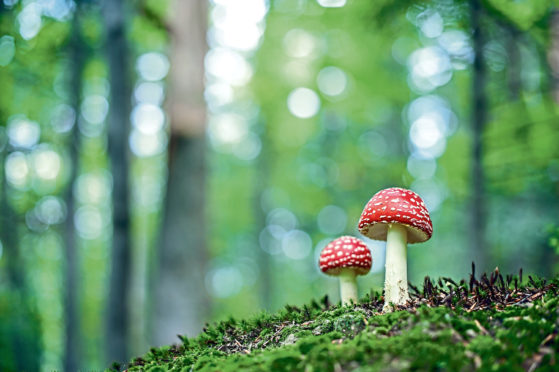Nestling by a sweep of birch woodland near Finzean in central Deeside lies a wonderful damp pasture where fungi abound well into late autumn.
It is an Aladdin’s cave of fungal heaven, and one of the stars are the fly agarics found by the birch margins, which glow like smouldering embers. It is a most striking fungus, with their scarlet caps frosted with white. This is the toadstool so widely depicted in children’s fairy tales, including Alice in Wonderland.
But behind that red-cloaked beauty lies a warning, for fly agarics are poisonous, and in parts of Europe there was the old custom of using the caps, crumbled in milk, to kill flies, hence the name.
At a time of year when much life is dying back and closing down in preparation for winter, fungi are doing quite the opposite and are bursting into life. There are many attractive types, but the sulphur tuft is one my favourites. It typically grows in densely packed clusters and brings a dash of lovely sulphurous yellow to a dark woodland floor with the top of the umbrella-shaped cap being slightly darker in tint than the rest of the toadstool.
While the sulphur tuft is always prominent because of its brashness, it is worthwhile to examine more closely other parts of the tree stump from which they are growing. You might be lucky enough to spot tiny orange clusters of coral spot fungus clinging to the surface, or perhaps on the ground nearby, the bright jagged fronds of yellow stagshorn, which look like miniature nuggets of gold.
Fungi underpin the natural world, for they are recyclers, nutrient providers for plants and support every type of habitat there is. Without fungi the natural environment as we know it would not exist. For humankind, fungi are medicine providers and are used in the production of many of our foods and drinks. Fungi define who we are and what we are.

The sheer diversity of fungi is mind-boggling. Many are typically mushroom-shaped, whereas others are downright weird in appearance, such as the contorted mass of yellow brain fungus often found in birch woods.
For the amateur naturalist, fungi can be tremendously frustrating because many species are difficult to identify and several types from the same family or group are often similar in appearance. Some species are also highly poisonous such as the rather innocuous looking death cap – just one toadstool is enough to kill an adult. It is for this reason that unless you really know your stuff or are accompanied by an expert, I would never recommend picking fungi for food.
Much better just to seek them out and enjoy their compelling beauty and infinite variety, and for me, there is no better place for such fungal delights than this little piece of field and wood by Finzean.
Info
Many fungi form mutually beneficial relationships with trees. Tiny underground threads from fungi intertwine with tree roots, helping trees absorb nutrients. In return, the fungi access food generated by trees through photosynthesis.
